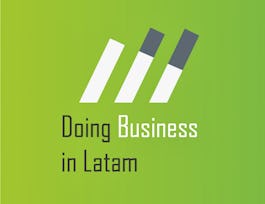Statistical Thinking for Industrial Problem Solving is an applied statistics course for scientists and engineers offered by JMP, a division of SAS. By completing this course, students will understand the importance of statistical thinking, and will be able to use data and basic statistical methods to solve many real-world problems. Students completing this course will be able to:


Statistical Thinking for Industrial Problem Solving, presented by JMP
Taught in English
8,935 already enrolled
(81 reviews)
Recommended experience
What you'll learn
How to describe data with statistical summaries, and how to explore your data using advanced visualizations.
Understand statistical intervals, hypothesis tests and how to calculate sample size.
How to fit, evaluate and interpret linear and logistic regression models.
How to build predictive models and conduct a statistically designed experiment.
Skills you'll gain
Details to know

Add to your LinkedIn profile
229 quizzes
See how employees at top companies are mastering in-demand skills


Earn a career certificate
Add this credential to your LinkedIn profile, resume, or CV
Share it on social media and in your performance review

There are 10 modules in this course
In this module you learn about the course and about accessing JMP software in this course.
What's included
3 videos4 readings1 app item
Statistical thinking is about understanding, controlling and reducing process variation. Learn about process maps, problem-solving tools for defining and scoping your project, and understanding the data you need to solve your problem.
What's included
26 videos3 readings16 quizzes1 app item7 plugins
Learn the basics of how to describe data with basic graphics and statistical summaries, and how to explore your data using more advanced visualizations. You’ll also learn some core concepts in probability, which form the foundation of many methods you learn throughout this course.
What's included
50 videos31 quizzes1 app item4 plugins
Learn how to use interactive visualizations to effectively communicate the story in your data. You'll also learn how to save and share your results, and how to prepare your data for analysis.
What's included
36 videos2 readings31 quizzes2 app items2 plugins
Learn about tools for quantifying, controlling and reducing variation in your product, service or process. Topics include control charts, process capability and measurement systems analysis.
What's included
41 videos3 readings26 quizzes2 app items2 plugins
Learn about tools used for drawing inferences from data. In this module you learn about statistical intervals and hypothesis tests. You also learn how to calculate sample size and see the relationship between sample size and power.
What's included
47 videos2 readings38 quizzes2 app items5 plugins
Learn how to use scatterplots and correlation to study the linear association between pairs of variables. Then, learn how to fit, evaluate and interpret linear and logistic regression models.
What's included
43 videos2 readings30 quizzes2 app items5 plugins
In this introduction to statistically designed experiments (DOE), you learn the language of DOE, and see how to design, conduct and analyze an experiment in JMP.
What's included
36 videos2 readings25 quizzes2 app items4 plugins
Learn how to identify possible relationships, build predictive models and derive value from free-form text.
What's included
39 videos2 readings30 quizzes2 app items
In this module you have an opportunity to test your understanding of what you have learned.
What's included
2 quizzes1 app item
Instructor

Offered by
Recommended if you're interested in Data Analysis

Northeastern University

Rutgers the State University of New Jersey

Shanghai Jiao Tong University

Universidad de los Andes
Why people choose Coursera for their career




Learner reviews
Showing 3 of 81
81 reviews
- 5 stars
87.65%
- 4 stars
11.11%
- 3 stars
0%
- 2 stars
0%
- 1 star
1.23%
New to Data Analysis? Start here.

Open new doors with Coursera Plus
Unlimited access to 7,000+ world-class courses, hands-on projects, and job-ready certificate programs - all included in your subscription
Advance your career with an online degree
Earn a degree from world-class universities - 100% online
Join over 3,400 global companies that choose Coursera for Business
Upskill your employees to excel in the digital economy
Frequently asked questions
Access to lectures and assignments depends on your type of enrollment. If you take a course in audit mode, you will be able to see most course materials for free. To access graded assignments and to earn a Certificate, you will need to purchase the Certificate experience, during or after your audit. If you don't see the audit option:
The course may not offer an audit option. You can try a Free Trial instead, or apply for Financial Aid.
The course may offer 'Full Course, No Certificate' instead. This option lets you see all course materials, submit required assessments, and get a final grade. This also means that you will not be able to purchase a Certificate experience.
When you purchase a Certificate you get access to all course materials, including graded assignments. Upon completing the course, your electronic Certificate will be added to your Accomplishments page - from there, you can print your Certificate or add it to your LinkedIn profile. If you only want to read and view the course content, you can audit the course for free.
You will be eligible for a full refund until two weeks after your payment date, or (for courses that have just launched) until two weeks after the first session of the course begins, whichever is later. You cannot receive a refund once you’ve earned a Course Certificate, even if you complete the course within the two-week refund period. See our full refund policy.


